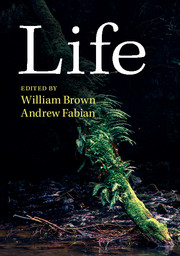Book contents
- Frontmatter
- Contents
- List of figures
- List of tables
- Notes on contributors
- Preface and acknowledgements
- 1 Life and death of a cell
- 2 The spark of life
- 3 From genomes to the diversity of life
- 4 Artificial life
- 5 Life in conflict: soldier, surgeon, photographer, fly*
- 6 Life in the ancient world*
- 7 Life in ruins*
- 8 The after-life*
- Index
- References
8 - The after-life*
Published online by Cambridge University Press: 05 September 2014
- Frontmatter
- Contents
- List of figures
- List of tables
- Notes on contributors
- Preface and acknowledgements
- 1 Life and death of a cell
- 2 The spark of life
- 3 From genomes to the diversity of life
- 4 Artificial life
- 5 Life in conflict: soldier, surgeon, photographer, fly*
- 6 Life in the ancient world*
- 7 Life in ruins*
- 8 The after-life*
- Index
- References
Summary
Be prepared
When asked about what happens next, Woody Allen replied, ‘I don’t believe in an after-life, although I am bringing a change of underwear.’ Such preparedness goes to the heart of understanding attitudes to the after-life. ‘Leave nothing to chance’ was the advice taken by the ancient Egyptians who could afford a Book of the Dead to be buried with them, even if the book factory where they bought it often misspelt their names (Taylor 2010). The words, it seems, did not matter as much as the possession of the object. As a satnav to the future such devices could never be properly tested, or returned as faulty, and many purchasers probably got stuck on the equivalent of a bridge that was too narrow in the netherworld of the dead. Nonetheless, the book which contained some 200 spells had a long shelf life, enjoying a period of popularity between 1550 and 1069 bc. It acted to overcome the dangers of the netherworld, which were many, and through which the dead person walked, floated on air or travelled by boat. Clearly the inspiration for today’s gaming industry, the many levels and dangers that the dead person encountered were overcome by the special powers of the spells that transformed them into a variety of animals and plants; and by transforming they triumphed until they reached their goal and the game was over.
After-life and after-person
As an archaeologist I could provide an historical account of the many and varied beliefs in the after-life. I could range across the cultures of the world, digging into the temporal archives to recover nuggets of information that would delight and intrigue, and which gathered together would form a facet of its creator’s after-life; read, transformed and remembered.
- Type
- Chapter
- Information
- Life , pp. 147 - 165Publisher: Cambridge University PressPrint publication year: 2014
References
- 2
- Cited by



